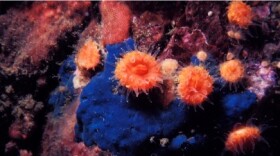Multiple bean-based casseroles crowd the holiday table. Five desserts but no bread. A lackluster tofurky dish foisted on an unsuspecting neighbor. The day after the meal, the clock begins to tick on picked-over dishes. Such is the stress food can fuel over the holiday season.
As people prepare their feasts, local governments in Western Washington are encouraging them to address one issue in particular: food waste.
Food waste makes up nearly a quarter of what goes to landfills in the United States. Americans throw away some 30% to 40% of food produced, according to the U.S. Department of Agriculture.
This is a local issue as well. In King County, food scraps and related items make up more than 16% of total landfill waste.
It’s especially prevalent around the holidays. Americans throw away more than 300 million pounds of food around Thanksgiving every year — equivalent to about $550 million or 267 million meals — according to the nonprofit ReFED, which tracks food waste.
Much of the food that’s currently wasted could go toward people who are facing food insecurity, according to the nonprofit Feeding America, which runs “food rescue” efforts. Washington state's plan to slash food waste includes rescuing edible food and getting it to those in need.
Of course, not all discarded food products could have been eaten; the Environmental Protection Agency distinguishes between inedible food scraps, such as pits and bones, and uneaten food that could help feed people.
But throwing out scraps, partially eaten dishes and unused food is also an environmental issue. As food decomposes, it emits methane, a powerful and planet-warming greenhouse gas. In landfills, that process is supercharged.
There are a few simple things you can do to cut down on food waste.
Before the meal
According to a ReFED and NielsenIQ survey, the vast majority of Thanksgiving hosts plan for leftovers.
Experts suggest cooking less for holiday meals to cut down on waste and save money. There are also ways to do so by cooking with food scraps.
Kitsap County recommends using a tool from the organization Save the Food to estimate how much food you’ll need based on the number of people making up the party.
King County has a list of tips for how to cut down on food waste in general, such as properly storing fresh food.
Pierce County has recommendations for cooking on a budget and meal scraps or leftovers to whip up other dishes, such as stir fries, frittatas, and soups.
The Washington state Department of Ecology has its own list of suggestions for cutting down on food waste over the holidays.
These tips include:
- Make a grocery list before shopping.
- Check what you already have.
- Plan what you’re making and how much.
- Freeze leftovers and food that won’t be eaten right away.
After the meal
Leftovers have earned their rightful place in the litany of holiday offerings. But there are many ways to handle them (you don’t have to eat turkey sandwiches for a week straight).
Many dishes can be frozen. The state also has instructions on how to keep leftovers fresher and make them last longer.
Organic waste can be composted — in places like Seattle, it’s required by law. Find out more about how to compost in King, Kitsap and Pierce counties at their websites.
Unused ingredients or any shelf stable food bought from a store can be donated to a local food banks. Below are some resources to help find one near you.
Statewide:
The Washington state Department of Agriculture has a list of food assistance programs and resources
King County:
Kitsap County:
Pierce County:







